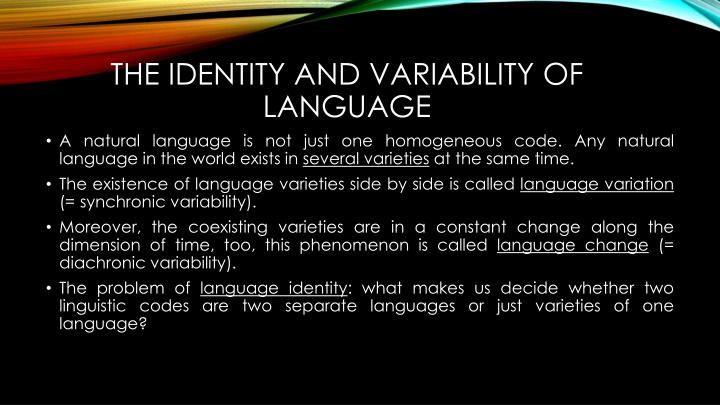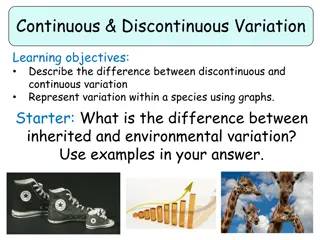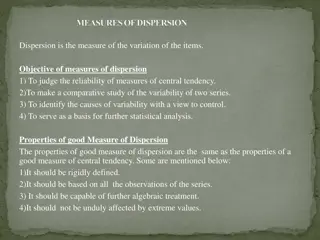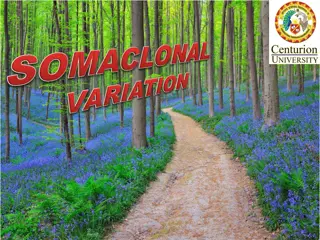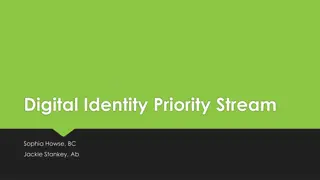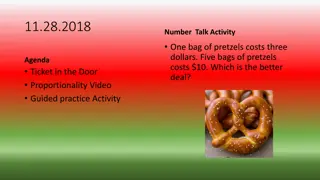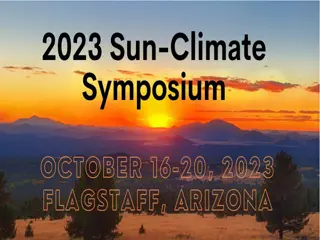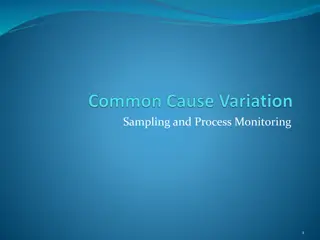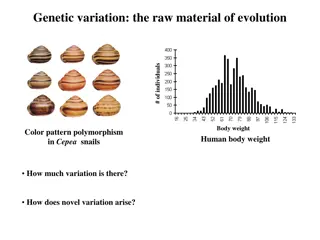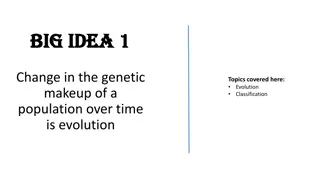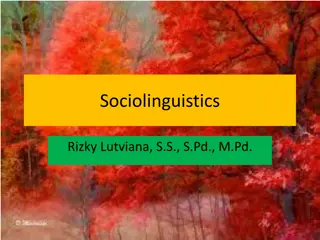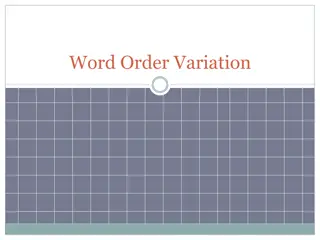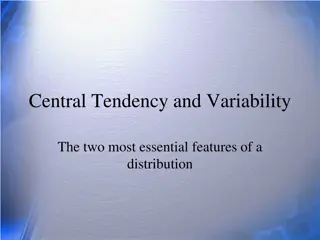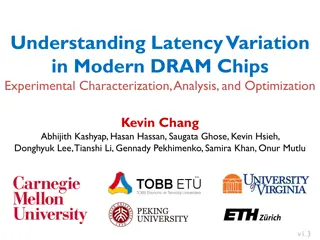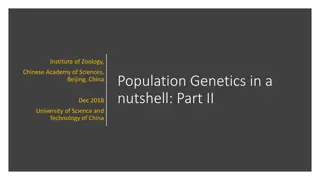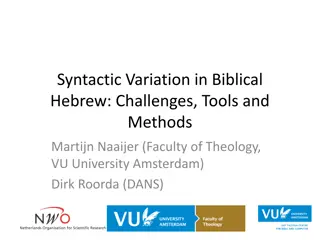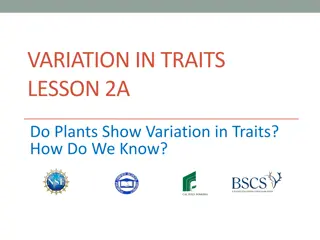The Identity and Variability of Language: Understanding Language Variation
A natural language exists in multiple varieties simultaneously, with coexisting varieties undergoing constant change over time. Explore the concept of language identity, variation, and user-related distinctions within linguistic codes.
Download Presentation

Please find below an Image/Link to download the presentation.
The content on the website is provided AS IS for your information and personal use only. It may not be sold, licensed, or shared on other websites without obtaining consent from the author.If you encounter any issues during the download, it is possible that the publisher has removed the file from their server.
You are allowed to download the files provided on this website for personal or commercial use, subject to the condition that they are used lawfully. All files are the property of their respective owners.
The content on the website is provided AS IS for your information and personal use only. It may not be sold, licensed, or shared on other websites without obtaining consent from the author.
E N D
Presentation Transcript
THE IDENTITY AND VARIABILITY OF LANGUAGE A natural language is not just one homogeneous code. Any natural language in the world exists in several varieties at the same time. The existence of language varieties side by side is called language variation (= synchronic variability). Moreover, the coexisting varieties are in a constant change along the dimension of time, too, this phenomenon is called language change (= diachronic variability). The problem of language identity: what makes us decide whether two linguistic codes are two separate languages or just varieties of one language?
THE IDENTITY AND VARIABILITY OF LANGUAGE Language identity is a socio-psychological concept, one language is the sum of all the varieties that their users are culturally and politically conditioned to regard as one and the same language. So English, like any other abstraction, it is a cover term for all the linguistic codes that are, or have been, or will be, regarded as English. Language variation can be discussed in terms of user- related and use-related variation. natural language, is an
USER-RELATED VARIATION The geographical and social position. That variety of a language which is used in a certain geographical area is called regional dialect or just dialect. Dialects may differ in vocabulary, pronunciation and even morphology and syntax. They can be established by collecting linguistic features characteristic of the area. The line marking the limit of the distribution of a linguistic feature on a map is called an isogloss. It often happens that one of the regional varieties gains social-political priority over the others and becomes the standard variety (or prestige variety), which is used for education, scholarship and state administration all over the country. most obvious user-related language varieties involve the user s
USER-RELATED VARIATION The standard variety is no longer restricted to the geographical area where it was originally used but is associated with people who are educated, who are at the top of the socio-cultural scale, no matter where they live. The standard is no longer a regional dialect, it is rather a social dialect, or sociolect. A sociolect is a variety of language used by people in the same sociocultural position. It is important to emphasise that the standard variety has a higher social prestige, but is not linguistically better than the other varieties. For instance, Standard English was originally a regional dialect used in the South-East of England and its emergence as the standard was accidental from a linguistic point of view.
USER-RELATED VARIATION Standard English has two major national sub-varieties, Standard British and Standard American, neither of which is linguistically superior to the other. The two display remarkable uniformity, the greatest difference between them is probably in pronunciation. The ideal type of pronunciation of Standard British English is called Received Pronunciation, or RP. The pronunciation associated with Standard American English is called General American, or GA. Standard British English, with its RP, is the language of the educated people at the top of the socio-cultural scale in Britain. Those near the bottom of the socio-cultural scale nearly always use non-standard varieties, which may coincide with regional dialects but may also cut across dialect boundaries. Here are a few examples: He want it., I wants it., That was the man has done it., He don t know nothing., I ain t got no car., etc.
USER-RELATED VARIATION One must not think, however, that examples of this sort are incorrect. They simply belong to other codes than the standard. They are perfectly well- formed within the varieties to which they belong and obey the rules of those varieties. A third type of user-related language variation is pidgin. A pidgin is usually the simplified version of a European language, containing features of one or more local languages, used for occasional communication between people with no common language, in West Africa or in the Far East. For example, Melanesian Pidgin English is used in Australian New Guinea and the nearby islands. When a pidgin becomes the native language of a community, it is called a creole. For instance, in Jamaica, in addition to Standard English, there exist several kinds of Creole English
USER-RELATED VARIATION Finally, one could add to the list of user-related varieties the linguistic features that are attributable to the age and sex of the language user. Apart from the features of child language, however, such features are not sufficiently systematic to form clearly identifiable varieties. For instance, although one can spot a few features that tend to occur more often in the language of female speakers than in the language of male speakers (and vice versa), it would be unjustified to separate feminine and masculine varieties of English.
USE-RELATED VARIATION The first type of use-related variation is conditioned by the medium of language use, i.e. by speech and writing. The language we speak is generally different from the language we write. When we write, we are often more careful and use longer sentences because the addressee is not present and so cannot rely on the situation (physical context), but can always go back to the beginning of the sentence and read it again if necessary. The second type of use-related variation is style. This is conditioned by the language users relative social status and attitude towards their interlocutors (e.g. they can talk to equals, to people in higher or lower social positions, to older or younger people, to children, they may talk to someone who they have never seen before or to someone who is an old friend of theirs, etc.) We recognise a neutral or unmarked style, which does not show any obvious colouring brought about by relative social status and attitude. On either side of this we can distinguish sentences which are markedly formal or informal.
USE-RELATED VARIATION Formal style is usually impersonal and polite, used in public speeches, serious polite talk, serious writing (official reports, regulations, legal and scientific texts, business letters, etc.). A very formal style can be called rigid, it is nearly always written and standard. Informal (colloquial) style characterises private conversations, personal letters between intimates and popular newspapers. A very informal style can be called familiar, this may involve the use of nonstandard features, four- letter words, and slang expressions. Slang can be defined as very informal language, with a vocabulary composed typically of coinages and arbitrarily changed words, such as the ones often created by young speakers. Some slang expressions are associated with particular groups of people, so we can distinguish e.g. army slang, school slang, etc.
USE-RELATED VARIATION When we use language, we must use sentences that are not only grammatical and meaningful but also stylistically appropriate, i.e. matching the stylistic requirements of the situation. For instance, the sentence Be seated. is perfectly grammatical and meaningful, but would be ridiculously inappropriate if we said it to a friend of ours in our home (unless we wanted to sound humorous). The third type of use-related language variation is register, which is conditioned by the subject matter in connection with which the language is being used. Each field of interest, activity, occupation is associated with a special vocabulary, and it is mainly these vocabulary differences that underlie the different registers. Thus we can talk about the registers of sports, religion, medicine, computer engineering, cookery, weather forecasts, etc.
IDIOLECT, CODE SWITCHING, DIGLOSSIA The total of all the varieties of a language that a person knows is the person s idiolect. An idiolect, then, is the amount of a language that an individual possesses. The ability to change from one variant to another is code switching. For instance, a doctor switches codes when he speaks of a bone as tibia to his colleagues in the hospital and as shinbone to his family at home. It can happen that two distinct varieties of a language co-occur in a speech community, one with a high social prestige (e.g. Standard English, learnt at school, used in church, in serious literature, and generally on formal occasions), and one with a low social prestige (e.g. a local dialect, used in family conversations and other informal situations). The sociolinguistic term for this situation is diglossia, and an individual having diglossia is a diglossic.
